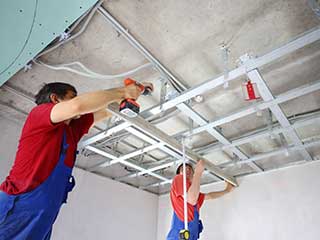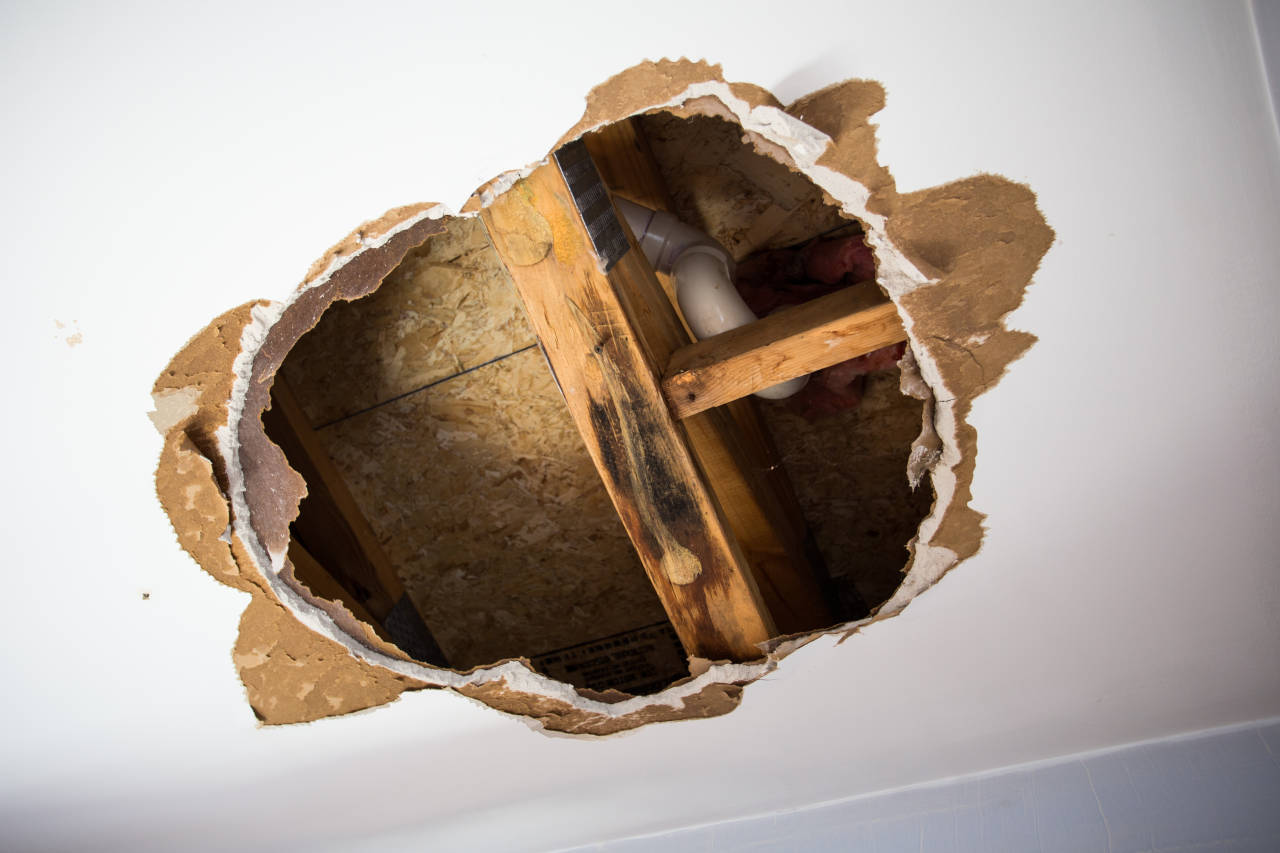Learn about how Drywall Installation Ogden Utah can elevate professional painting services.
Discover the very best Practices for Successful Drywall Repair Service and Setup
The art of drywall repair work and installation calls for a mix of ability and precision. Mastering the crucial devices is vital for attaining a smooth coating. Understanding the step-by-step procedure can make a considerable distinction in the result. Proper strategies for mudding and taping are also crucial. What stays is the understanding of maintenance that ensures durability. These aspects with each other create a polished end result worth discovering better.

Essential Tools for Drywall Repair Work and Installation
When carrying out drywall repair and installment, having the right tools can significantly enhance the performance and high quality of the job. An utility knife is important for cutting drywall sheets exactly, while a drywall saw can assist in making much more elaborate cuts. Taping knives, readily available in numerous sizes, are crucial for applying joint compound efficiently and evenly. A drywall sander, preferably with a dust collection attribute, helps accomplish a polished finish, minimizing the demand for extensive cleanup.
In addition, a measuring tape assurances exact measurements, and a degree guarantees that installments are straight and plumb. Safety and security equipment, including dirt masks and goggles, must not be overlooked to safeguard versus particles and dust. Finally, a stud finder help in situating framing participants, guaranteeing safe installment. By gearing up oneself with these important devices, the fixing and installation process ends up being a lot more convenient and causes a professional-quality outcome.

Step-by-Step Overview to Patching Holes
Covering openings in drywall requires a systematic approach to assure a smooth fixing. Initially, the location around the hole should be cleaned and any kind of loosened debris got rid of. For small holes, a putty knife can be made use of to apply a lightweight spackle, pushing it right into the hole and smoothing the surface area. After it dries, sanding is vital to produce a flat surface. For bigger holes, a spot of drywall might be essential. This involves cutting a piece of drywall somewhat larger than the opening, protecting it to the wall with screws, and utilizing joint compound to cover the joints. Once the substance dries, it ought to be sanded smooth. Priming the patched area before painting will assure an also finish. Complying with these actions will certainly result in a professional-looking repair that blends effortlessly with the surrounding wall surface.
Techniques for Smooth Drywall Installment
Accomplishing smooth drywall setup demands careful preparation and implementation. It is essential to gauge and cut drywall sheets accurately to minimize voids. Making use of an energy blade, installers must score the board before snapping it along the cut line, ensuring tidy edges. Effectively straightening the sheets is crucial; beginning with the top and functioning down aids keep uniformity.
Attaching drywall to the studs requires consistent spacing, normally every 16 inches, using screws instead of nails for better hold. This technique reduces the danger of stands out over time. Additionally, staggering the seams between sheets boosts structural stability and reduces the visibility of joints.
Ultimately, using the ideal density of drywall for particular locations-- from this source such as moisture-resistant enters shower rooms-- more adds to a flawless surface. Complying with these methods will certainly lead to a smooth and professional-looking installation, establishing the stage for the subsequent ending up processes.
Completing Touches: Insulation and Mudding
Ending up touches, such as taping and mudding, play a necessary duty in attaining a sleek drywall surface. Taping involves applying a slim strip of drywall tape over the joints and joints, making certain a smooth look. This procedure assists avoid fractures and creates a strong bond between drywall sheets. It is vital to pick the best sort of tape, with paper and fiberglass mesh being the most typical choices.
Mudding, or applying joint compound, follows taping. This compound completes gaps and ravel the surface for an uniform coating. It is typically used in multiple layers, with each layer needing to dry prior to fining sand. Correct technique involves feathering the edges to blend the substance into the surrounding drywall, minimizing presence.
When completed appropriately, mudding and taping enhance both the structural and visual stability of the drywall installation, leading to a professional-quality surface.
Tips for Keeping Your Drywall After Installation

Additionally, keeping a constant interior humidity degree can stop warping or mold and mildew growth. Making use of a dehumidifier in damp locations, like basements, is a good idea. It's also beneficial to regularly repaint locations that show wear, as this shields the underlying material. Lastly, when relocating furnishings or mounting components, caution needs to be worked out to avoid damaging the drywall. By following these upkeep tips, home owners can extend the life of their drywall, guarding it continues to be an attractive feature of their insides.
Frequently Asked Inquiries
What Security Equipment Is Required for Drywall Fixing and Installment?
For drywall fixing and installation, necessary safety and security gear consists of safety and security goggles to shield eyes, dust masks to stop inhalation of bits, handwear covers for hand protection, and knee pads for comfort throughout extended kneeling. drywall contractor.
Just how Do I Figure Out the Drywall Density Needed for My Task?
To establish the drywall thickness required for a job, one need to think about the wall surface's structural demands, regional building ordinance, and the meant usage of the area, normally selecting 5/8-inch or 1/2-inch drywall.
Can I Fix Drywall Without Removing Furnishings From the Space?
Yes, drywall can be fixed without eliminating furniture from the room. Careful planning and protective measures can minimize mess, enabling effective repairs while maintaining bordering products safe from dust and damages during the process.
What Sorts of Drywall Are Ideal for Various Atmospheres?
Moisture-resistant drywall is optimal for kitchens and bathrooms, while soundproof drywall suits shared wall surfaces in apartment or condos. Fire-rated drywall is best for garages, and common drywall works well generally living locations, making certain longevity and viability for different environments.
How much time Does It Take for Drywall Mud to Dry Completely?
Drywall mud generally takes 24 to 2 days to completely dry entirely, click here for more depending upon elements like moisture and temperature level (Interior Painting). Thicker applications might require longer drying out times, while thinner layers can dry faster. Appropriate air flow aids drying
The art of drywall repair work and setup needs a blend of skill and precision. When carrying out drywall repair service and installation, having the right devices can considerably improve the performance and high quality of the work. An utility blade is vital for cutting drywall sheets precisely, while a drywall saw can aid in making more detailed cuts. Attaining seamless drywall installment demands cautious preparation and execution. Moisture-resistant drywall is ideal for kitchens and shower rooms, while soundproof drywall matches shared walls in houses.